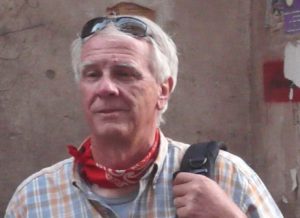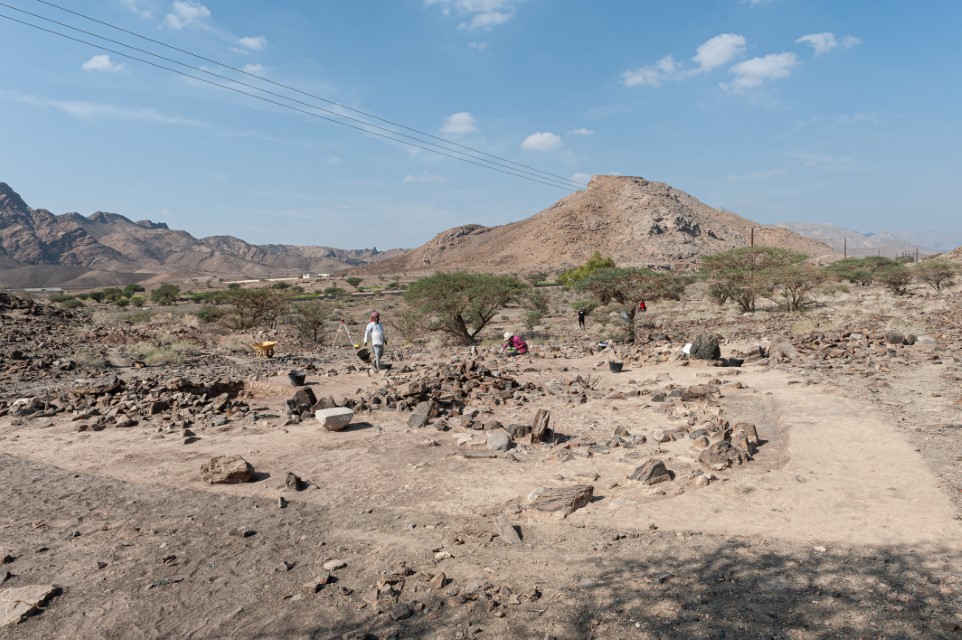-
Principal Investigator: Prof. Piotr Bieliński
Contact: p.bielinski@uw.edu.pl

Project collaborators:
Project term:
April 2019 to April 2025
Budget:
PLN 1 342 493
Funding:
National Science Centre in Poland, HARMONIA 10, 2018/30/M/HS3/00635

-

The development of settlement in the mountains of northern Oman in the Bronze and Iron Ages
Keywords: Oman, Magan, Eastern Arabia, Umm an-Nar, Bronze Age, Iron Age, falaj, copper
The project aims at investigating the development and forms of settlement in one of the least known parts of Oman – in the mountain valleys of northern Hajjar mountains. The research centers on remains of settlements from the Bronze and Iron Ages (3rd to mid–1st millennium BC). At that time this region was among the main centers of copper mining. The copper was exported all the way to Mesopotamia, as we are informed by cuneiform inscriptions of Mesopotamian kings who describe the territory of present–day Oman as the land of Magan.
Up till now, archaeologically investigated sites from this period lie in inland oases south of the Hajjar mountains, or in the coastal zone. Investigations of settlement in the mountains of northern Oman will fill this gap in the knowledge of the various ecological conditions related to the development of proto–historical cultures of eastern Arabia. For this reason, the Qumayrah micro–region in wilayet Dhank was chosen as a case study.
It is situated at a junction of important routes used since antiquity that provided the region’s inhabitants with means of regular contact with other regions, including important centers of Bronze and Iron Age cultures. In the course of the investigations several sites were excavated and/or surveyed, including a cluster of Bronze and Iron Age sites around the modern village of Ayn Bani Saidah in the southern part of the study area and near the modern village of Belt, in the northern part of the area. The investigations uncovered settlement remains from the Umm an-Nar culture (sites QA 3 and QB 2; 2nd half of 3rd millenium BC) and from Iron Age II (sites QA 3, QA 20 and QA 21; first half of 1st millennium BC). Geological and geomorphological investigations look into the subsistence of the settlement inhabitants and their possible participation in the lucrative industry involving copper extraction and trade.
Image: Site QA3 in the Qumayrah micro-region (Photo Jakub Śliwa/PCMA UW)
Associated events:2022: media on the discovery of a game board at QA3 (PDF)
January 2022: Qumayrah Valley in Oman: ancient towers, copper trade and games
January 2018: Ancient settlements unearthed in Qamira (Oman Daily Observer)
January 2018: Three important archaeological sites unearthed in Oman (Times of Oman)Lectures and conference presentations:2022 55th Seminar for Arabian Studies, Berlin
– Agnieszka Pieńkowska – poster: “Excavations at an Umm an-Nar settlement in the Qumayrah region (seasons 2018-2021): Insight on the long-
distance trade in northern Oman”2022 Conference “Poles in the Near East, 2022”, Warsaw
– Piotr Bieliński – presentation: “Supposed Iron Age II ceremonial precinct on the QA3 site in Northern Oman. An attempt of reconstruction”
– Agnieszka Szymczak, Mateusz Iskra – presentation: “An Iron Age II village in the Hajar Mountains: the first results of excavations at QA 21, Qumayrah Valley (Oman)”2021 Conference “Polacy na Bliskim Wschodzie, 2021”, Warsaw (online)
– Piotr Bieliński – presentation: “Osada z epoki żelaza II w górach północnego Omanu. Omańsko–polskie badania w Ayn Bani Saydah, 2016–2019”
– Agnieszka Pieńkowska – presentation: “Osadnictwo z epoki brązu na stanowisku Ayn Bani Saydah w północnym Omanie. Wyniki badań polsko-omańskiej misji archeologicznej w sezonie 2019”2021 12th International Conference on the Archaeology of the Ancient Near East, Bologna (online)
– Piotr Bieliński – presentation: ” Two Umm an-Nar period settlements in the mountains of north-western Oman (Wadi Qumayrah valley)”2019 Conference „Polacy na Bliskim Wschodzie 2019”, Warsaw
– Piotr Bieliński – presentation: “Osadnictwo z epoki brązu i wczesnego żelaza w górskiej dolinie wadi Qumayrah (Oman). Badania na stanowiskach QA 3 i QA 21”Project bibliography:Bieliński, P., Pieńkowska, A., Szymczak, A., & Iskra, M. (2024). Omani-Polish Archaeological Mission 2022: Excavations at QA20 and QB2 in the Qumayrah Micro-region. Al Athar Archaeology and Heritage Bulletin, 1, 7–12.
, & (2024), An Iron Age village in the Hajjar Mountains of Northern Oman: QA 21 in the Qumayrā microregion. Arabian Archaeology and Epigraphy, 1–23. (https://doi.org/10.1111/aae.12254)
Bieliński, P., Pieńkowska, A., Białowarczuk, M., Kiersnowski, H., Bukowski, K., & Lenarczyk, S. (2023). Patterns of pre-Islamic settlement in the Qumayrah microregion, northern Oman: First results of an archaeological and geological survey. Arabian Archaeology and Epigraphy, 1– 17. (https://doi.org/10.1111/aae.12226)
Pieńkowska, A. (2020), Iron Age Settlement in the Region of Qumayrah, Oman w: Proceedings of the 11th International Congress on the Archaeology of the Ancient Near East, 04-07 April 2018, Munich, Volume 2, Wiesbaden: Harrassowitz Verlag, 331–340
Pieńkowska, A., (2019), A 3rd millennium BC stone stamp seal from the Omani site of Qumayrah Ayn 3, w: A. Pieńkowska, D. Szeląg & I. Zych (Eds), Stories told around the fountain. Papers offered to Piotr Bieliński on the occasion of his 70th birthday, Warsaw: University of Warsaw Press; PCMA UW, 535–546 (DOI: https://doi.org/10.31338/uw.9788323541714.pp.535-546)
Links
- Read more about investigations in the Qumayrah micro-region
- Prehistoric and metallurgical sites in northern Oman surveyed by PCMA UW
